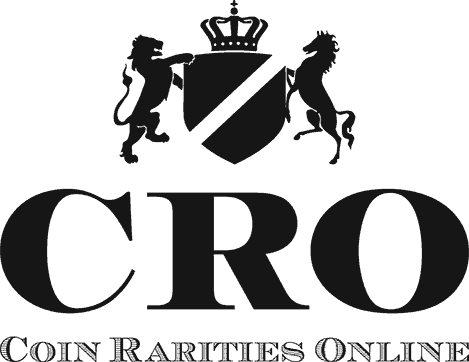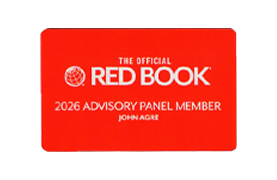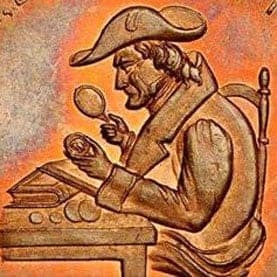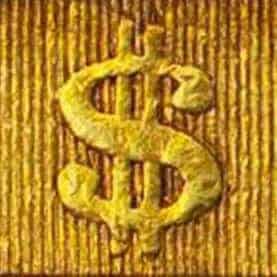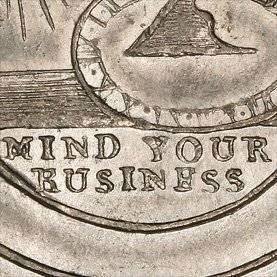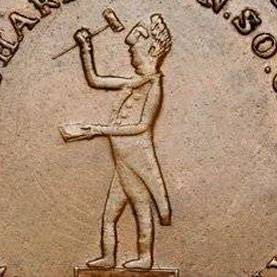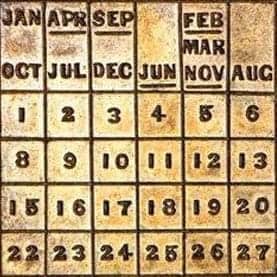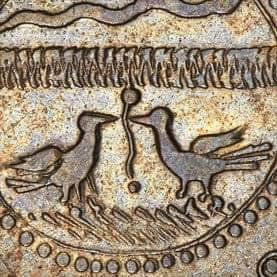February 9-18, 2007: The Long Beach Coin & Currency Expo
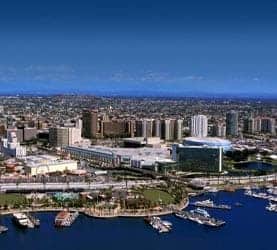
Day 1:
Another coin show, another of our critically acclaimed Road Report Travelogues begins right now –
For us, the Long Beach Show actually kicked off today, as we took a mid-afternoon flight from frigid New England to 60-ish Southern California.
The flight was pretty uneventful – just a smooth 6 and a half hour jaunt on JetBlue watching K-1 Heavyweight MMA and a live concert by Corrine Bailey Rae on my little in-seat TV. Then grabbed the bags and headed off to Beverly Hills in a cab-ride from Bizarro World.
I like to chat with cab drivers as much as anyone, but this guy kept engaging me in conversation about the world economy while speaking in the same hushed tones as the ‘low-talker’ from that Seinfeld Puffy Shirt episode:
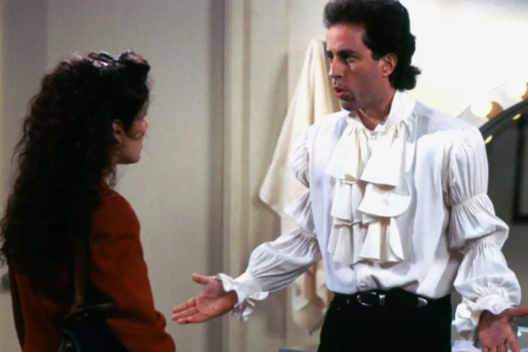
I think I said ‘Excuse me – I cannot hear you’ eleven times during the trip and then just flat gave up and instead interjected an ‘Uh-huh’ or ‘WOW!’ every few minutes to keep things moving. The guy seemed to be happy with that, and kept chattering away, quietly, for 45 minutes. I’m just hoping I did not agree to wear a pirate shirt somewhere in our conversation, though I did apparently agree to take a detour so he could show me the electronics store where he used to work and point out his old office. I’m serious.
Anyway, we finally arrived at the hotel around 9:00 PM, checked in, and collapsed.
Why get here 5 days before the show, you ask? And what in the heck are you doing in Beverly Hills when the show is in scenic Long Beach? Auctions. Tons of auctions. T-O-N-S.
Yes, we are here for 5 glorious days filled with endless lot viewing and multiple live sessions held by Bowers and Merena, Superior and Goldberg before we’ll head on down to Long Beach and the show (and tons of Heritage auctions!) on Wednesday.
Tomorrow brings all-day lot viewing of each followed by the Bowers and Merena auction here at our hotel on Saturday night, and you can read all about what we saw right here in the Day 2 recap.
Day 2:
Day 2 started with a bang, when I banged my foot on the Italianate table located at the foot of the bed in my hotel room. But no serious harm was done.
Breakfast at 8:00 AM with Brad Karoleff, auctioneer for both Bowers and Superior, and then a walk across the hall to lot viewing for the Bowers sale held right here in our hotel.
The Bowers offering was a tidy grouping of primarily US type containing a number of monster coins from something called the ‘Grand Traverse Heritage Collection’, and a group of very high grade, handsome coins bearing the Larry Shapiro pedigree. Mr. Shapiro has a good eye, evidently, as most everything with his name on it was ‘all there’. Not exactly the type of coins we usually buy though, as these deluxe pop top plays aren’t always the best value in our humble opinion. A legitimately graded MS67 Capped Bust Half Dime is a site to behold, but the premium it commands over a not-so-terribly-different looking MS65 or MS66 example is often boku-bucks.
We were also intrigued to see that the Shapiro offering included a few moderns, with an apparently rare 1999-P Connecticut State Quarter in a PCGS MS68 holder catching our eye. Mr. Shapiro was the unusual type of collector who mixed classics and moderns in an elegant way. Pretty cool.
We looked at everything for about 2 hours, identified a grand total of three (3) coins of possible interest, and then walked down the hill to Superior.
There we found a dozen or so people viewing another compact offering, this far less interesting, less tidy and much more of a mixed bag. The colonial section, for example, included three coins: A low grade Washington piece worth a couple of hundred bucks, a wildly rare Rosa Americana pattern in PCGS SP64 worth well into five figures, and a low grade Hibernia Farthing worth a couple of hundred bucks. That, my friends, is an odd mix.
The rest of the sale featured a handful of valuable rarities, a smattering of just stuff and a large number of oddball proofsets and modern foreign issues that were not interesting to us. Then there were the acres of 1921 Peace Dollars offered as a consignment by the aptly named ‘1921 Peace Dollar Guy’ (who presumably also has this as is vanity license plate).
But the most interesting part of the session was the run of Civil War Tokens. These are a neat and undiscovered area of numismatics with some interesting motifs and designs. Unfortunately, the entire run seemed to have been nuclear radiated by the scientists at NCS. I don’t know why someone would have done this other than to make this nice group of 140 year old tokens as shiny as possible. And if that was the goal, then it was achieved with flying colors.
In all, Superior took us an hour or so and we headed across the street to Goldberg’s for the auction which held the most promise. And we were not disappointed.
A very interesting offering here, from colonials through early copper, some very attractive type coins and some nice gold. Plenty of sexy things to bid on and what surely will be a competitive session starting Sunday at 1 PM.
We spent about 4 hours there soaking it all in, then headed back up the hill for a short break before the Bowers auction kicked off at 5 PM.
Pretty concentrated day, which we will expect again on Sunday as we re-review all of the lots of interest and hope to buy a handful of cool coins.
But first I’m going to move that table.
Day 3:
Catalogs in hand, we left the hotel at around about 9:00 AM Sunday for some last minute lot viewing and auction prep.
Dave headed over to Superior, while I walked straight to Goldbergs to re-review the 2 dozen or so lots we had decided to target in their 1:00 PM session.
Viewing was only moderately crowded at Goldbergs this day (very different than the SRO sessions last summer and fall) making it possible to buzz through the lots at a healthy clip with basically no waiting. That was good. And I was able to narrow down our 2 dozen lots to a grand total of 8 pieces we would try to buy. That was good too.
Dave arrived around 11:00 and we had one last look at the lots interrupted only by one (1) fire alarm which forced us to evacuate the offices and stand out on the street for 15 minutes until the fire department told us the coast was clear. Which they did. Anyway, with that excitement past, we got back to work and came to our final decisions.
As an aside, its always amazing to us how differently we see some coins, with both Dave and I really liking some that the other hates. But jointly we always arrive at the small number that we both like and that we would want to own ourselves. And those are the coins we offer on our site.
Anyway, when we finally finished it was back up the hill to our hotel again to check previous auction prices realized on a couple of coins on the computer and then back down the street to the Crown Plaza Hotel for the auction itself, arriving with about 5 minutes to spare.
Phew.
While Goldberg lot viewing was only moderately crowded, the auction room was packed to capacity (unlike past half-full sessions). Most of the dealer community showed up, plus a number of collectors and a few phone reps with dozens of bidder cards scattered in front of them. And it kind of felt like prices were about to be high.
And for the most part, they were.
Colonials kicked things off, with a few notable results:
Lot 2, an Oak Tree Shilling ex-Norweb in an NGC MS61 holder sure is an interesting coin that’s been around the block. It sold in Norweb in the late 80s as an XF described as one of the finest known, but they neglected to mention that the die cud which is typically seen on this variety had been plained off. As in ‘tooled’. But that didn’t stop it from eventually being slabbed in a PCGS Green Label AU50 holder (sans Norweb pedigree). It eventually sold in a Heritage auction in April of 2006 for $14,000 hammer, and then reappeared, raw, in a Stack’s auction in September 2006 and hammered for $16,000. But on this day, as an NGC unc., it opened and closed to the book at $12,500. So I’m sure we’ll see it again pretty soon.
Lot 66, a somewhat drab though apparently totally original Continental Dollar in a PCGS AU55 holder realized a tepid $35,000 hammer. It seems like prices on these coins have been losing some steam for the last several months after a meteoric rise before that. Neat coins, but they aren’t all that rare and for a long while there they seemed to be defying gravity.
Lot 79, a stunning, raw uncirculated Nova Constellatio pedigreed to the Eliasberg collection shot itself into low earth orbit, realizing $28,750 all-in. Some people in attendance thought that was too much money, but we were not among them.
Lot 91, a beautiful, original copper Myddelton Token with a humongous scratch across 1/2 the reverse (but still inexplicably graded MS64 RB by PCGS) stalled at $17,000 hammer. Without the scratch, that coin was an unmitigated monster – the best I’ve ever seen. With the scratch, it was damaged goods.
In all, the best stuff went very strong, while the sub-par coins did what they usually do: They died.
And then it was time for the early copper.
Prices here were stronger still, the product of a nice offering supported by an enthusiastic crowd of both EAC and slab dealers and collectors.
Lot 141, the nice PCGS MS62 1794 Half Cent pedigreed to the Eliasberg collection saw bidding from all angles before hammering for a very robust $52,500. That’s just about double what this same coin brought – in the same holder – when sold as part of the Oliver Jung collection in July of 2004. Still, that seems like a reasonable value for what that is.
Lot 251, The Norweb Chain Cent graded PCGS AU55, hammered for $95,000 to the dealer who sold it to the guy who consigned it to this auction. I’m not sure what that means, if anything, but it sure is symmetrical.
Lot 269, a very wholesome PCGS AU53 1795 Cent attracted widespread interest and hammered for $6,250. Far higher than our estimate, but a coin we really liked and tried to buy.
And so it went, with anything good, or interesting going very strong across the board.
The evening session included hundreds of middle and late date Large Cents which isn’t our focus, so we opted instead for a Sushi dinner and an early evening.
Overall on this day, we bought 6 of the 8 lots we targeted, which we thought was a pretty good result – and a success rate we would be very happy to repeat tomorrow.
Until then –
Day 4:
Monday began early on the coast, with, yet again, lot viewing at the Goldberg offices in anticipation of their 1:00 PM session. Today’s focus: Small Cents – Half Dollars.
After 72 hours in Beverly Hills, we have now officially entered what numismatists call the ‘Dog Days’ of the pre-auction period. The novelty of being in a warm climate has started to dissipate, the excitement of seeing thousands of coins for the first time has dissolved into the sad realization that most of the them are not nice, and the once charming quirkiness of our disorganized hotel is really starting to tick me off. I’d like my room key to actually be able to open my door, for example.
At this point, we’d pretty much like to finish up and move on to the show.
Anyway, we had earlier identified 3 things of high interest in this Goldberg session, but viewed all the lots once again to confirm our opinions and ensure that we didn’t miss anything good. And after looking once again, we were down to just 2. Thats 2 out of 629 lots, which means that we must be really, really picky.
Since our lots were in the middle of the session, we headed to the auction an hour or so after it started and found the room 25% less full than the previous day, with most everyone in attendance being a dealer.
Watching from nickels forward, things were pretty lackluster, with a lot of items seemingly opening, receiving no bids and then closing at that number. I’m not sure if they were selling or not, but there definitely was not any back-and-forth bidding in the room. This trend continued for some time until, all of a sudden, the Ebay activity suddenly ramped up during the dimes and what seemed like dozens of lots hammered to some unseen electronic bidder at pretty high numbers. It was odd – as though some guy somewhere in the midwest suddenly woke up, logged on to Ebay, thought ‘Hey, look at all these coins!’ and began bidding with reckless abandon.
Now, for all I know, there were hundreds of sophisticated bidders out there, all choosing Ebay as their preferred venue and all targeting these same coins, but it didn’t seem that way. And I’d be very surprised if there were a lot of smart people who thought paying a 20% buyer’s fee for the privilege of bidding in this manner was a real good idea.
In any case, we we ended up buying 1 of the 2 items we wanted at at our max number, while the other went for almost double our planned bid (to the aforementioned Ebayers).
We also, unusually for us, bought a 2nd coin that we had no intention of bidding on, but had to because it was going so cheap during the session. Generally speaking, I don’t recommend this knee-jerk auction methodology, but if you view every lot and then see a coin going way below market, why not? We’ll end up wholesaling this at the show to another dealer for maybe double what we paid, which is not unappealing.
A few interesting results caught my eye overall:
Lot 1335, a 1962 Roosevelt Dime in PCGS PF67, opened and closed at $13. I was tempted to cut the bid at $13.50 just to be funny, but auction-prolonging humor is not really recommended during the ‘Dog-Days’.
Lots 1345 and 1346, the two 1796 Quarters in PCGS F12, went very strong IMO, hammering for $24,000 and $25,000 respectively. We’ve had higher grade nicer coins on our site for comparable money very recently.
Lot 1423, an OK 1794 Flowing Hair Half Dollar in PCGS AU58, sold for a really, really strong $190,000 to a specialist dealer.
Lot 1428, a reasonably nice 1797 Small Eagle Half Dollar, went to an Ebay bidder for $62,500 hammer. I’m just still amazed that someone buying coins in this price range is using Ebay to do it and thus paying an extra $3,125 in fees. I’m not a licensed psychotherapist, but this seems a little wacko.
And then we left, with the goal of killing the hour and a half before the Superior evening session would begin. We planned to bid on 2 lots in this session, and avail ourselves (along with many other hungry coin dealers) of the free dinner they provide. We did, we won our lots and I had the chicken.
That was about it.
Tuesday we get to do it all over again, with the focus on Dollars and Gold. We have another handful of lots of interest in these sessions, widely spaced of course, meaning that we’ll be in and out of the auction room for the entire day.
The really good news is that I believe Martes is Mexican food night at Goldbergs –
Day 5:
I’m afraid I’ve got some really bad news about Tuesday – Goldbergs did not serve Mexican food at their evening auction session buffet.
This may not seem like a big deal to many of you, and I realize there are even some coin collectors who (unbelievably) do not like Mexican food, but Dave and I had been looking forward to this for a while. Anyway, making the best of a troubling situation, we availed ourselves of the pesto chicken and little potatos.
But let’s get back to the beginning of this day.
We started at the crack of 9:00 AM, when the first of 517 lots of Dollars and Commemoratives was hammered down to a floor bidder by Ira Goldberg.
The session started off strong like a bull, with the run of frankly mediocre Flowing Hair Dollars bringing generally big money. We had viewed those coins and dismissed all of them as not very nice (or worse), but that’s an issue which is always in demand, and so we could probably find buyers for even inferior examples and still make a fair profit – but we don’t want to be dealing in coins we don’t like. So we don’t do it.
Moving ahead to a point of interest, we come to lot #1582, the 1798 Draped Bust, Small Eagle Dollar in NGC AU50. This is one issue for which the sheet is way off base, has always been way off base and examples of this type, when they do appear, sell for numbers that aren’t even close to the sheet. As did this lot, which hammered for $21,000 against Greysheet bid of $16,500. And this wasn’t a particularly nice example.
We’re very familiar with this type, and recently had a nice AU55 for which we paid way over sheet (of course) and sold it for a short profit – but we also fielded 4 or 5 calls while it was on our site from collectors wanting to know why our price was ‘so far off’ the sheet. Enough about the sheet already.
Instructive Note #1: If you want to buy a 1798 Draped Bust, Small Eagle Dollar, leave your sheet at home.
Anyway, the session proceeded smoothly until the requisite ‘amusing exchange with a phone bidder’ (which is sort of a regular feature of all auctions, much like ‘Weekend Update’ is a regular feature on Saturday Night Live) on lot #1794.
Apparently the guy was bidding from a restaurant and couldn’t hear what was happening, causing a very brief free-for-all during which our own Dave Wnuck volunteered to intercede and speak to the guy directly to straighten things out. Alas, that was not necessary, and the auction continued apace.
Instructive Note #2: If you want to bid by phone, order take-out.
As for our own efforts, we were pleased to buy all of the coins we wanted, including lot #1630, an 1876 proof Trade Dollar. The catalog had a large run of these coins and we studied them carefully, arranged them all side by side, picked the most eye-appealing, original example of the group and bid on only this one. We basically ignored the slabbed grades, and in fact felt that some of the highest graded coins in the group were, frankly, funky – artificially toned, enhanced and almost cartoon-like in appearance, and we wouldn’t have bought them for any price.
Instructive note #3: In our experience, the best, most desirable coin is often not the highest graded.
We also bought a coin that we were frankly astonished to find during lot viewing: An original, uncorrupted 1893-S Morgan Dollar in PCGS XF45 – the numismatic equivalent of Bigfoot – rumored to exist, but never seen. This too was in a run of these coins, including no less than 7 others in identical PCGS XF45 holders. The other coins were cleaned and/or unattractive and of no interest to us at all. Inexplicably (or maybe not surprisingly in this modern market) they all sold for about the same amount of money despite the grand canyon-sized gap in quality and desirability between them.
Instructive note #4: Coins in like holders come in all levels of quality, from horrific to spectacular, and while we were prepared to pay extra-deluxe-premium money for our coin, we would not have paid anything – literally – for any of the others. And I am not exaggerating when I say that.
Finally, there is the little issue of the coin we didn’t buy (or even bid on). I won’t identify it out of respect for the actual buyer, but Dave and I had targeted an important mid 5-figure coin early on in our viewing process, and both liked it a lot. But in our 2nd review of the lots we found a hidden problem that neither of us had seen the first time (nor did the grading service, evidently). Once we saw it, we couldn’t not see it, and we quickly crossed it off of our list.
Instructive note #5: Be careful out there – there are plenty of problem coins in holders and those problems are frequently well and carefully hidden.
That closed the morning session, leaving us to go back and re-review our plans for the gold coins offered in the evening session (did I mention that no Mexican food was served there?).
The gold kicked off as scheduled at 6:00 PM, which is not to say that we didn’t think it was at 5:00 PM, and thus run in a panic 5 blocks in a freak rainstorm thinking we were late, only to get there and discover that the door to the auction room was still locked. That was terrific.
Anyway, the auction was a bit of a mixed bag tonight and I was sort of fading in and out of consciousness during the bidding. I did however snap out of it sufficiently to buy one cool inexpensive coin and then to watch Dave buy a really big coin about 2 hours later.
And that was all we bid on, bringing the 2007 Long Beach Pre-Auction schedule to a close.
Walking back to the hotel at about 10:00 PM we agreed that the auctions turned out about as well as they could have. We bought almost everything we wanted, didn’t really regret dropping out on the few that went higher than we wanted to pay, and had no buyers’ remorse on anything we did get.
Q: How the heck can you top that?
A: I guess you’ll find out right here, tomorrow.
Day 6:
Breakfast at 8:00 AM, packing, checking out of the hotel and then loading up the car for the one hour drive from Beverly Hills to Long Beach is how we began our Wednesday.
Sitting in a late-night Heritage session with a dozen or so other dealers bidding on an unusual mix of medals and tokens while typing this blog is how I ended it.
In between, it was a pretty full day.
We arrived in Long Beach at about 10:00, dropped our bags at the hotel, slowly sprinted over to the convention center, picked up our dealer package, case keys and IDs, and then waited patiently for Heritage to open lot viewing – located, as always, right near the entrance to the bourse – at precisely 11:08.
It’s two catalogs this time – a skinny 800-lot book of medals and tokens, and a more typical Yellow Pages-sized (though teal) offering of colonials through everything else.
And we viewed it all, right then and there, 4,000 lots in six sessions at high speed, with the intention to separate the wheat from the chaff and make sure we didn’t miss anything good in there. In total, we found about a dozen things within of probable interest, and will narrow that down or confirm it during the next couple of days.
This took us to just about 2:00 PM, when the bourse floor would officially open and we could take our place in the mass herd migration of dealers from the door to our table, or, in this case, part of a table.
At every other show in the country, we take a large, luxurious space and spread out our Coin Rarities Online inventory in a sort of pseudo-celebration of coins. But not here. In Long Beach, we have historically shared table space with EAC member and top dealer Jim McGuigan, with our efforts to find a new location and expand our space proving to be an exciting real estate challenge. But I won’t bore you with that now.
Anyway, set-up was scheduled from 2 to 7 on this day, and we spent every bit of that time getting organized, submitting a bunch of coins for grading and scouring the floor for interesting things to buy. But we weren’t very successful at the last, finding absolutely nothing (literally) we wanted. In fairness, not every dealer had set-up this day (though I’m not sure why not), and we are cautiously optimistic that tomorrow will be different.
And at the stroke of 7:00 PM, it was time for me to head on up to the kick-off of Heritage session one, the aforementioned medals and tokens being auctioned on the second floor while Dave headed back to the hotel to answer a bunch of customer emails and the like.
Our focus is on the ‘old stuff’ – the Hard times Tokens and Civil War Tokens in this session – though I watched as the So-Called Dollars and other more modern items apparently sold really well.
On the other hand, and despite some hilarious and energizing auctioneering by Heritage’s Bob Merrill, the market for overgraded and uninspiring Hard Times Tokens is not very good. Most highest graded pieces in this session were just not very nice, and the bidding reflected it. But when anything good did come up, the bidding suddenly came to life and these few, widely scattered pieces sold for multiples of the others. Clearly the ‘two-tier market’ exists in the token world as it does in the more mainstream areas of numismatics.
I had just three lots of interest this evening and bought two of them. I could have bought the third as well, but somewhere during the bidding I got spooked and dropped out. This can happen sometime, usually when it’s just us and one other bidder going back and forth for multiple increments with no one else in the game. In those situations, you better really want the coin, and in this case I was slightly ambivalent. I’ll let you know if I regret that decision tomorrow – I might.
And that’s the story. The bourse opens at 8:00 AM to dealers on Thursday, and so I really need to get to bed.
Day 7:
Directly after Wednesday came Thursday, the 7th day of our California odyssey with a new twist – today the public would enter the picture.
And they did, right at 10:00 AM, easily identifiable by their visitor badges and Greysheets. I would describe the crowds as moderate, and tame.
This day would also be important for several other reasons:
We would be able to pick up our NEWPs from the Goldberg auction, which we were excited about. Some really cool coins in there, including many we were surprised to be able to buy, and all are now in our display cases. Some are even on this site already!
Our first grades came back from PCGS, with everything pretty much where we expected it. While of course we don’t want to get unreasonably low grades, it may shock the reader to learn that we really don’t want some absurdly high grades either. We figure if we are getting undeserved results, then so must everyone else, and that isn’t good for the overall market. In our warped view of the world (by current numismatic standards) we’d like everyone – not just us – to get grades that properly reflect the coins inside the holders. Thats all. Nothing more.
And then Heritage session 2 would quietly erupt at 1:00 PM, with 15 to 20 people in the room, another unseen group bidding by phone, a vocal podium and prices that were absolutely all over the place:
- Lot #2008, an NGC MS 65 Elephant Token hammered for only $7,000 to an internet bidder, less than it did when last sold publicly about 3 years ago in the same holder at ANR.
- Lot #2042, a “Brass” Fugio restrike in a PCGS MS65 holder was notable in that none of us thought it was actually brass (I defy anyone to sort a random batch of 100 such Fugio Restrikes into uncontroversial and definitive groups of copper and brass – I say it it cannot be done), and none of us thought it was a 65. Didn’t matter. Someone bought it for $5,500 as the POP top in this metal.
- Lot #s 2043 and 2044, a pair of tiny 1783 Chalmers Threepences (about the size of California fractional gold coins) in VF25 and XF45, sold for a robust $11,000 and $28,000 hammer respectively to a well-known dealer.
We left after the colonials concluded, and then popped back into the bidding room a couple of times during the day just to try to buy a few scattered lots. And we did with great zeal.
When not bidding, we were on the bourse floor and spent most of our time figuring two new deals of cool US type which we hope to complete on Friday. And if we do, I promise that you will be the first to hear about it.
Our day ended with Heritage session 3, followed by dinner with a few dealer friends at ‘The Madison’ and then, in lieu of dessert, an impromptu and lengthy discussion of the current state of the ANA with Board Members Barry Stuppler and Donald Kagin who happened to be seated at the table next to us.
Without going into detail of what we discussed, I will say I was really impressed with them, their approach, their willingness to listen to the concerns of the membership (i.e. us), to vet the issues facing the ANA and their sincere desire to improve things.
And now, if you’ll excuse me, Friday begins in about an hour.
Day 8:
And on the 8th day, at approximately 3:00 PM, it got really, really busy.
I don’t know why, or how, but after a significant amount of non-activity all morning and then some pleasant discussion and coin grading activity in the middle of the day, we suddenly had a flurry of coin selling in the late afternoon.
A number of dealers who had looked at coins and considered buying them earlier in the week all showed up to buy at the same time. Plus several collectors. Plus 2 calls from customers wanting to order a number of coins off our website. And all this within about an hour.
And it was good.
On the other hand, a lot of what we sold, again, was new, cool stuff we bought specifically to put on the website. And now we can’t. C’est la vie!
We are always intrigued to see what happens when we buy a really choice and beautiful coin at auction and pay a strong price for it.
Often someone will come to our table, pick up the coin, admire it, ask how much, check the price vs the sheet for that grade and tell us our coin is too expensive for a 64 and that they ‘saw a 64 for $xxx at dealer ABC’s table’.
And then the next person will come to our table, pick up the same coin, see the same price, and buy it immediately.
The moral of this story is four-fold:
- Everyone likes choice, beautiful coins.
- Nice coins are never inexpensive.
- The sheet is not written with nice coins in mind.
- If you are looking for coins which are nothing special or just average for the grade and which trade only for sheet levels, we probably aren’t the right dealer for you.
But that’s OK –
We also had some fun this day with a collector and his young YN son who found us via this website and came to the table to discuss the wonderful world of early gold. And it is wonderful, and the coins are beautiful and rich in history and eminently collectible. On the other hand, these collectors also had a real concern about the plethora of reworked and doctored material in this specialty, and wanted to know how they could protect themselves from buying problem coins.
Now, you can discuss this sort of thing all you want, or you can trust a dealer to do it for you, but we believe there is absolutely no substitute for seeing actual coins yourself and knowing exactly what to look for – so our own Dave Wnuck accompanied the two of them to lot viewing at Heritage to review the lots of early gold coins in this session and to see what they would see. By all accounts, it was enlightening.
We’d highly recommend that anyone considering embarking on a new area take a similar approach:
- See as many coins as you can in your area of interest and develop your own understanding of what to look for (and what to avoid).
- Read about and study these coins, including a review of recent auction prices and trends to really understand the market.
- Only buy coins (especially expensive items like these) after you have done enough homework to be comfortable with your purchase.
That wraps up Friday.
Saturday promises to be frenetic, as we typically have many visitors this day, and also need to clean up all loose ends, ship our coins out, pack up and catch a late night flight home.
The next recap will be the last as we close the book on the Long Beach Expo, February 2007.
Day 9:
We have unplugged our table lamps, shipped home several enormous boxes of auction catalogs, rolled up our banner and have closed the book on another LBE.
This one will not go down as record setting, but it was a nice show overall with decent sales and better buying. Plus we didn’t lose any of our display case keys during the week which is always a bonus.
We ended on sort of a medium note, as Saturday brought moderate traffic, but a number of serious sounding tire kickers who we wouldn’t be surprised to hear from in the coming weeks.
And either we encountered a misleading number of serious new collectors among the visitors to our table during our stay out here, or there really are a lot of people entering the market and interested in relatively expensive and high-end collector coins.
We also encountered many ‘Type 2’ collectors – those that believe that all coins of the same grade are created equal and who simply don’t understand that quality differences can be this big (hands held far apart). We do our best to try to educate and illustrate the differences which can exist among “identical” coins, and to show some recent auction results where two of the same grade coins were offered and one sold for double the other. But with some people, that message just does not resonate. At all.
And that’s OK – we really believe that everyone should collect whatever they want however they want. Plus the population of really choice coins is limited, and it’s best not to waste them on those who don’t appreciate them.
Speaking of choice coins, we did have an interesting exchange with another dealer about an item in our case during the afternoon.
He saw that we bought a really nice early type coin in a PCGS MS64 holder for which we were asking more than ‘5’ money – i.e. more than an MS65 is listed for on the Greysheet.
Even though the other dealer agreed that the coin was superb, his view was that we “couldn’t offer the coin at ‘5’ money (notwithstanding the fact that we paid that much for it) unless we actually upgraded it first”.
Now, we can appreciate that this concept might be revolutionary to some people, but we bought the coin because it is spectacular and we have never seen another one like it. And it occurred to us that things must be pretty far out of whack in this hobby for someone to consider the slab grade first, then the price, then the Greysheet when evaluating a coin. We would suggest that such an assessment might begin with the actual coin itself.
Oh well. We’ll keep doing what we do and hope that we find a few like-minded collectors who share this apparently revolutionary vision.
Our next show is not until Baltimore, though we cannot rule out the possibility that we will show up in Charlotte as well.
